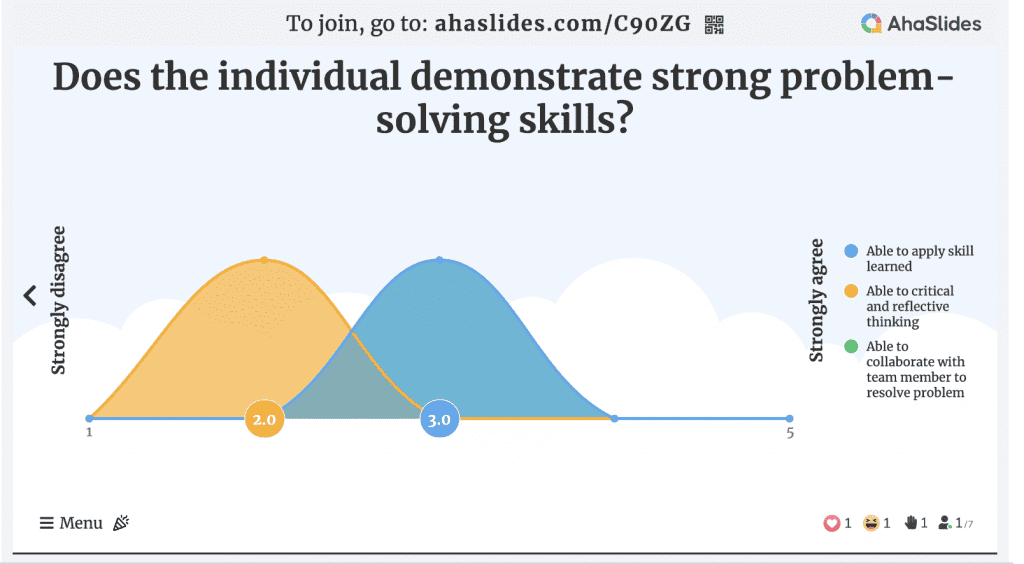What is coaching style of leadership? Leadership is making a huge transformation as the number of job quitters and job hoppers is growing exponentially as well as the participation of younger generations like Gen Y and Z in the labor market.
As this vibrant and dynamic generation brings forth their unique perspectives, values, and expectations, the traditional notions of leadership are being challenged and redefined. They need leaders who are willing to empower employees, nurture their talent, and ignite a sense of purpose, thus, the preference of Coaching style of leadership becomes increasingly obvious.
Join us as we step into the future of leadership, where coaching paves the way for success. Let's explore what Coaching style of leadership is, how it makes a difference and tips for becoming a good coaching leader.

Table of Contents
- What is Coaching Style of Leadership?
- What are pros and cons of coaching leadership style?
- 6 Coaching styles in leadership and examples
- 7 steps of Coaching style of leadership
- Frequently Asked Questions
- Bottom Line
What is Coaching Style of Leadership?
The Coaching style of leadership is an approach where leaders actively engage and empower their team members to maximize their potential. Rather than simply instructing or directing, leaders adopting the coaching style act as mentors, guiding individuals to set and achieve their goals. It is best describes in the book of Daniel Goleman'book with other 5 leadership styles.
Related:
What are Pros and Cons of Coaching Leadership Style?
The benefits of coaching leadership style and its drawbacks as follows:
| Advantages of Coaching style of leadership | Disadvantages of Coaching style of leadership |
| Fosters individual growth, enhances skills, and boosts confidence, leading to improved performance and job satisfaction. | Without proper training or experience, leaders may struggle to provide meaningful guidance, limiting the potential benefits of coaching leadership. |
| Creates a collaborative and inclusive environment where team members feel valued, respected, and motivated to contribute their best ideas and efforts. | Increases dependence of team member on their leader for guidance and decision-making, inhibiting their independence and problem-solving abilities. |
| Provide constructive feedback, promote self-reflection, and foster a culture of continuous learning, innovation, and adaptability. | Requires a significant investment of time and effort. |
| Create a cohesive and high-performing team that leverages the strengths of each individual, promotes a shared vision, and achieves collective goals. | May not be the most efficient or effective approach in situations that require immediate decisions or actions. |

6 Coaching styles in leadership and examples
Effective leaders possess the ability to flexibly adapt their coaching style based on the circumstances and the individuals they are working with. Thus, leaders might use different styles of coaching in leadership to provide the appropriate level of support and challenge based on the developmental needs of their team. And here are the 6 most common Coaching styles of leadership and examples.
Democratic Coaching Style of leadership
It is a participative approach where leaders involve team members in decision-making, goal-setting, and problem-solving processes. It emphasizes collaboration, open communication, and shared ownership of outcomes.
For example, Steve Kerr, famous for his supportive leadership, maintains an open-door policy, welcoming suggestions, feedback, and ongoing communication from the team.
Autocratic Coaching Style of leadership
The leaders approach directive and authoritative style when they want to maintain full control and assign tasks and responsibilities to team members without consulting or considering their opinions. They make decisions based on their own judgments and expertise, without seeking input or feedback from the team.
A good example is during team meetings, the leader tends to dominate discussions and directs the conversation to align with their own ideas and preferences.
Related: What is Autocratic Leadership? Ways to Improve it in 2023!
Holistic coaching style of leadership
This style focuses on the overall well-being and development of individuals, considering their personal, professional, and emotional aspects. Their priority is emphasizing work-life balance, personal fulfillment, and creating a positive and inclusive culture.
An example is a leader try to support their team members' professional goals while also promoting mental health initiatives and encouraging self-care practices.
Mindful Coaching Style of leadership
If the leader emphasizes these traits: self-awareness, presence, and compassion in leadership interactions, they probably follow mindful coaching leadership.
For example, when conflicts arise within the team, the leader remains calm and encourages open dialogue, creating a safe space for team members to express their concerns.
Group Coaching Style of leadership
It is built around the idea that a couch is responsible for a group of individuals simultaneously, focusing on collective growth, collaboration, and mutual support. They promote a learning environment where individuals learn from each other's perspectives and challenges.
You can find a good example of a group coaching leader in a marketing agency. The leader is likely to conduct regular group coaching sessions where team members come together to discuss industry trends, share successful strategies, and address common challenges.
Transformational Coaching Style of leadership
This style focuses on inspiring and empowering team members to reach their full potential. Leaders using the transformational coaching style motivate their team through vision, encouragement, and creating a sense of purpose. They foster a culture of growth and development, encouraging individuals to push beyond their perceived limits.
For example, Ted Lasso's leadership style goes with a consistent, persistent style of positive, home-spun, human-centric leadership.
Related: 5 Successful Transformational Leadership Examples
7 Steps of Coaching Style of Leadership
Though coaching leaders usually tailor their approach based on the individual, situation, and desired outcomes, there are common principles and processes to notice. Here is an explanation of each step:
Meet with your team
The first thing that every leader should pay close attention to is behavior, performance, and interactions of each team member. Try to observe their strengths, areas for improvement, and any patterns or issues that may arise in the first staff meetings or during teamworks. This step involves gathering objective data and information to inform the coaching process.
Conducting an analysis
Coming to the second step is an act of analyzing all the relevant data from the previous step. This step involves assessing individual and team performance, identifying strengths and areas for improvement, and understanding any challenges or obstacles that may be present.
Providing feedback
It is important for an effective coaching style of leadership to regularly offer constructive and specific feedback to team members based on the observations made. A good tip is focusing on both positive aspects and areas for improvement, delivering feedback in a timely and respectful manner. Use active listening skills to ensure that team members feel heard and understood.

Engaging in inquiry
The leader engages in open-ended questioning and active listening to encourage the individual to reflect on their own experiences, thoughts, and feelings. This inquiry helps the individual gain self-awareness, explore possibilities, and discover their own solutions.
Setting goals
In collaboration with the individual, the coaching leader helps define clear and meaningful goals. These goals should be specific, measurable, attainable, relevant, and time-bound (SMART). Setting goals provides a clear direction and focus for the coaching process.
Planning action steps
Once the goals are set, the leader assists the individual in creating a plan of action. This plan outlines the specific steps and strategies that the individual will take to achieve their goals. It may include skill-building activities, learning opportunities, or behavioral changes.
Rewarding improvements
Throughout the coaching style of leadership process, the leader acknowledges and celebrates the individual's progress and achievements. Recognizing improvements boosts motivation, builds confidence, and reinforces positive behaviors.
8 Tips to become a good coaching leader
A Leader as a Coach, it is a dramatic and fundamental shift. As a leader, you want to do everything you can to inspire and motivate your employees. With the right techniques and support, almost anybody can become a better coaching leader. You can follow these tips below to address your ongoing problems in your leadership style and improve your team performance and teamwork.
- If you want your employees to work with respect and follow your coaching, you first need to embrace it yourself, become Model of behavior. Lead by example is the quickest way to set the tone for the rest of the organization.
- Determine areas of concern with The GROW Model, which helps identify goals, assess current reality, explore options, and determine the individual's commitment to taking action.
- One of the best coaching leadership qualities is Continuous learning. It involves actively seeking knowledge, staying updated with industry trends, attending training programs, seeking feedback, and reflecting on coaching experiences.
- The best coaching leaders understand the importance of balancing praise and criticism. It means the leader should provide sincere and specific praise and offer constructive criticism simultaneously.
- Don't forget to Make coaching an organizational capacity. This involves promoting a coaching culture and mindset throughout the entire organization.
- Remove the barriers to change as part of the shift to a learning culture. In favor of a more coaching-oriented approach, leaders can facilitate open and supportive conversations than precision questioning, real-time feedback rather than mid-year performance review.
- Being willing to Adjust your strategy as necessary is crucial for staying competitive, fostering innovation, and achieving long-term success, followed by mitigating risks, and meeting the evolving needs of your stakeholders.
- Another essential thing to do is asking for 360-degree feedback. By seeking input from colleagues, subordinates, and superiors, leaders gain a comprehensive understanding of their strengths and areas for improvement. This feedback enhances self-awareness and facilitates targeted personal and professional growth.
Related:
- Must-Know Facts about 360 Degree Feedback with +30 Examples in 2023
- Mid Year Review Examples: 45+ Best Performance Review Phrases (With Tips)
- Ultimate Year End Review | Examples, Tips, and Phrases (2023)
Frequently Asked Questions
Got a question? We've got answers.
Who is a good example of a coaching leader?
What is a coaching leadership style with examples?
What is coaching mindset as a leader?
What are the 4 coaching styles?
What is the most famous coaching tools framework?
What competencies are required for leaders to adopt a coaching leadership style?
Bottom Line
We live in a world of flux and change, leaders play a crucial role in guiding individuals and organizations through uncertainty and cultural transformation is needed to replace traditional management style. Thus, there is no better way than starting with a coaching style of leadership. And, don't forget to use AhaSlides to send feedback to your employees and vice versa.







